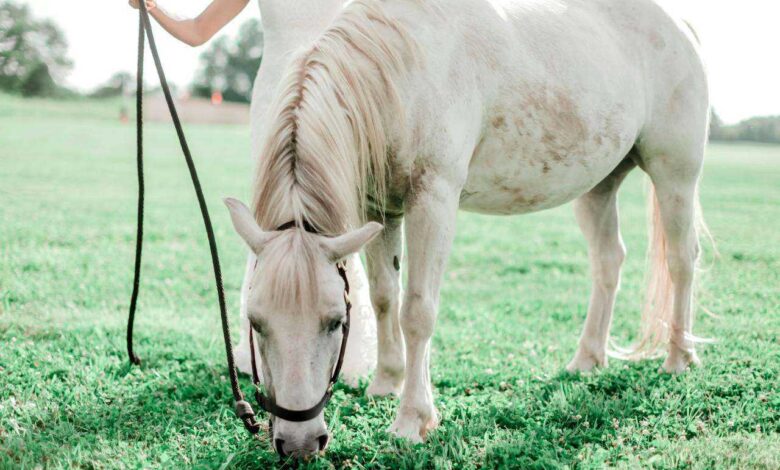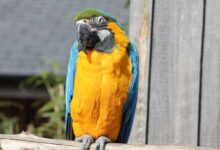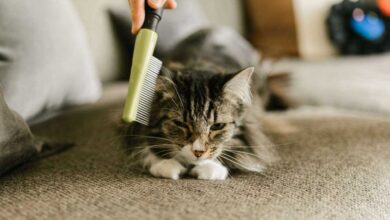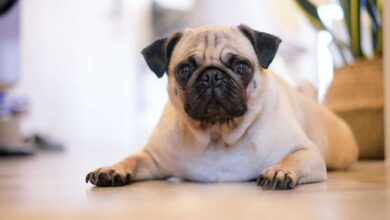How to Groom a Horse with Allergies: Tips and Techniques

How to groom a horse with allergies requires special care, attention, and a thorough understanding of allergy triggers and sensitivities that may affect the horse’s well-being and comfort. By implementing allergy-friendly grooming practices and selecting suitable grooming products, you can ensure a safe and comfortable grooming experience for your horse while addressing specific allergy concerns and minimizing potential allergic reactions. This comprehensive guide offers essential tips and techniques for grooming horses with allergies, providing valuable insights and practical strategies to promote a healthy and allergy-free grooming routine for your equine companion.
Understanding the Impact of How to Groom a Horse with Allergies : Identifying Common Allergy Triggers and Sensitivities
Understanding the impact of how to groom a horse with allergies begins with identifying common allergy triggers and sensitivities that may affect your horse’s skin, coat, and overall well-being. Let’s explore the key aspects of horse allergies and their implications for grooming practices:
Recognizing Allergens and Potential Sensitivities
- Identifying common allergens such as dust, pollen, mites, and certain grooming products that may trigger allergic reactions in horses
- Observing allergic symptoms and skin reactions, including itching, redness, hives, and skin irritation, as indicators of potential allergy sensitivities and discomfort in horses
- Consulting with equine veterinarians or allergy specialists to conduct allergy tests and assessments that help identify specific allergens and formulate effective allergy management strategies
Understanding Allergy-Friendly Grooming Practices
- Adopting gentle and non-invasive grooming techniques that minimize skin irritation and reduce the risk of allergic reactions during grooming sessions
- Implementing regular grooming routines that promote cleanliness, hygiene, and skin health while avoiding excessive brushing, scrubbing, or grooming activities that may exacerbate existing allergy symptoms in horses
- Creating a stress-free and calming grooming environment that fosters relaxation and emotional well-being in horses, reducing anxiety and potential allergic triggers during grooming sessions
Implementing Allergy-Friendly Grooming Techniques: Ensuring Safe and Comfortable Grooming Practices for Horses with Allergies
Implementing allergy-friendly grooming techniques is crucial for ensuring safe and comfortable grooming practices that accommodate the specific needs and sensitivities of horses with allergies. Let’s explore the essential strategies for grooming horses with allergies:
Bathing a Horse with Allergies to Shampoo
- Selecting hypoallergenic and fragrance-free shampoos and conditioners that are specially formulated to minimize skin irritation and allergic reactions in horses
- Performing thorough rinsing and drying techniques to eliminate residual shampoo residues and prevent skin dryness or itchiness after bathing
- Using lukewarm water and soft sponges or gentle washcloths to apply and spread shampoo evenly while avoiding excessive scrubbing or harsh rubbing motions that may agitate the horse’s skin
Brushing a Horse with Allergies to Dust
- Choosing soft-bristled grooming brushes and dusting tools that effectively remove dust, dirt, and debris from the horse’s coat without causing friction or skin abrasions
- Employing gentle and soothing brushing motions that promote blood circulation and natural oil distribution while minimizing the risk of stirring up airborne allergens or dust particles
- Cleaning and sanitizing grooming tools regularly to prevent the accumulation of dust, dander, or allergens that may compromise the hygiene and cleanliness of the grooming equipment
Trimming a Horse’s Hooves with Allergies to Metal
- Using lightweight and ergonomically designed hoof trimming tools that minimize pressure and ensure precision during hoof trimming and maintenance procedures
- Performing regular hoof inspections and cleaning routines to identify any signs of discomfort, inflammation, or allergic reactions caused by metal trimming tools or equipment
- Applying protective hoof balms or barrier creams that create a protective shield and reduce direct contact between metal instruments and the horse’s hooves, preventing potential allergic irritations or abrasions
Cleaning a Horse’s Ears and Eyes with Allergies to Mites and Pollen
- Employing gentle and non-invasive ear and eye cleaning techniques that involve using dampened and soft cotton pads or gentle wipes to remove dirt, debris, and potential allergens from sensitive areas
- Inspecting the ears and eyes for any signs of redness, discharge, or irritation that may indicate allergic reactions or underlying allergy-related conditions requiring prompt veterinary attention
- Administering prescribed ear and eye cleansing solutions or drops that are specifically formulated to alleviate discomfort and prevent allergic symptoms associated with mites, pollen, or other environmental allergens
Grooming a Horse’s Mane and Tail with Allergies to Detangler and Fragrance
- Using natural and organic detangling products and sprays that are free of harsh chemicals, artificial fragrances, or potential allergens to prevent skin irritation and allergic reactions in horses
- Employing gentle detangling techniques that involve carefully untangling knots and snarls in the mane and tail without causing discomfort or hair breakage
- Applying minimal amounts of fragrance-free grooming products and finishing sprays to enhance the shine and luster of the horse’s mane and tail while minimizing the risk of allergic sensitivities or skin irritations
Choosing the Right Grooming Products for Horses with Allergies to Fragrance
- Selecting hypoallergenic and fragrance-free grooming products, including shampoos, conditioners, grooming sprays, and coat polishing agents, that are specifically formulated for horses with sensitive skin and allergy-prone conditions
- Reading product labels and ingredient lists carefully to identify potential allergens or irritants that may trigger allergic reactions in horses with existing fragrance sensitivities
- Consulting with equine dermatologists or allergy specialists to recommend suitable grooming products and skin care solutions that promote skin health and minimize the risk of allergic sensitivities or adverse reactions
How to Groom a Horses with Allergies
Nurturing a safe and comfortable grooming experience for horses with allergies requires patience, diligence, and a commitment to implementing allergy-friendly grooming practices and selecting suitable grooming products that prioritize skin health and well-being. By understanding the impact of allergies on horse grooming, implementing effective grooming techniques, and choosing the right grooming products for horses with specific allergy sensitivities, you can create a nurturing and stress-free grooming environment that promotes optimal comfort and skin care for your beloved equine companion. With these invaluable insights and practical tips, you are well-equipped to embark on a fulfilling and meaningful grooming journey that celebrates








